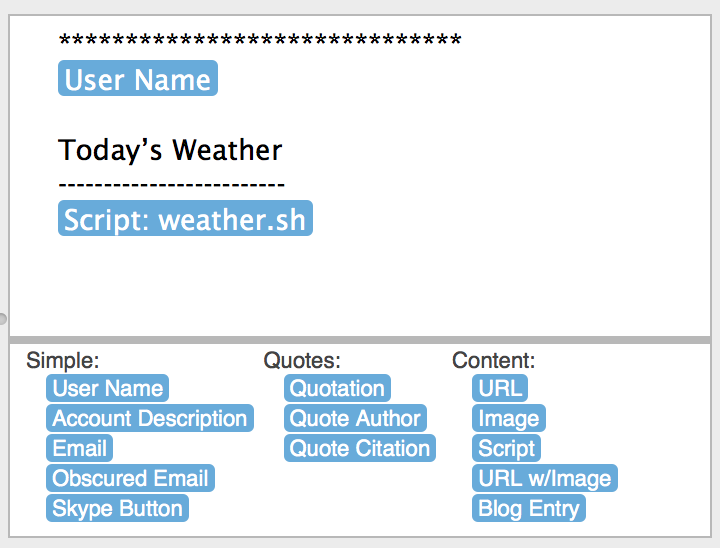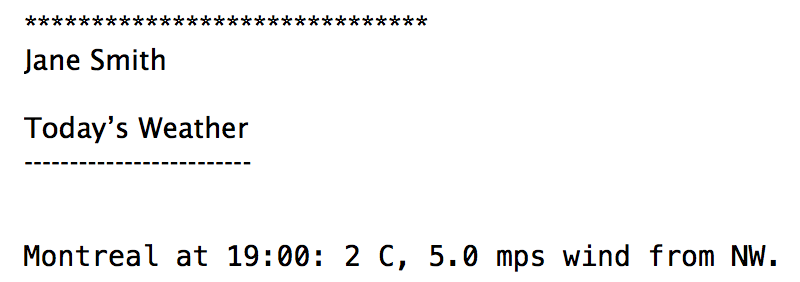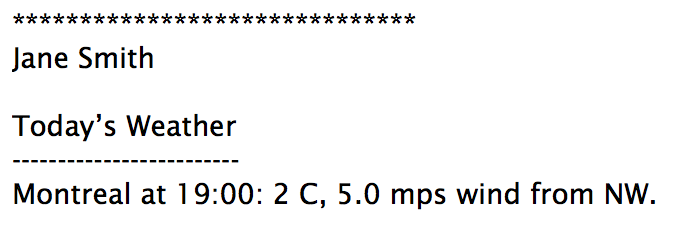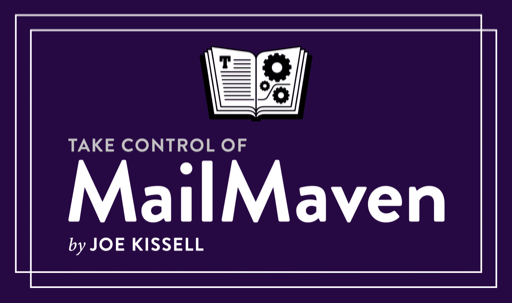Setting Up Signatures
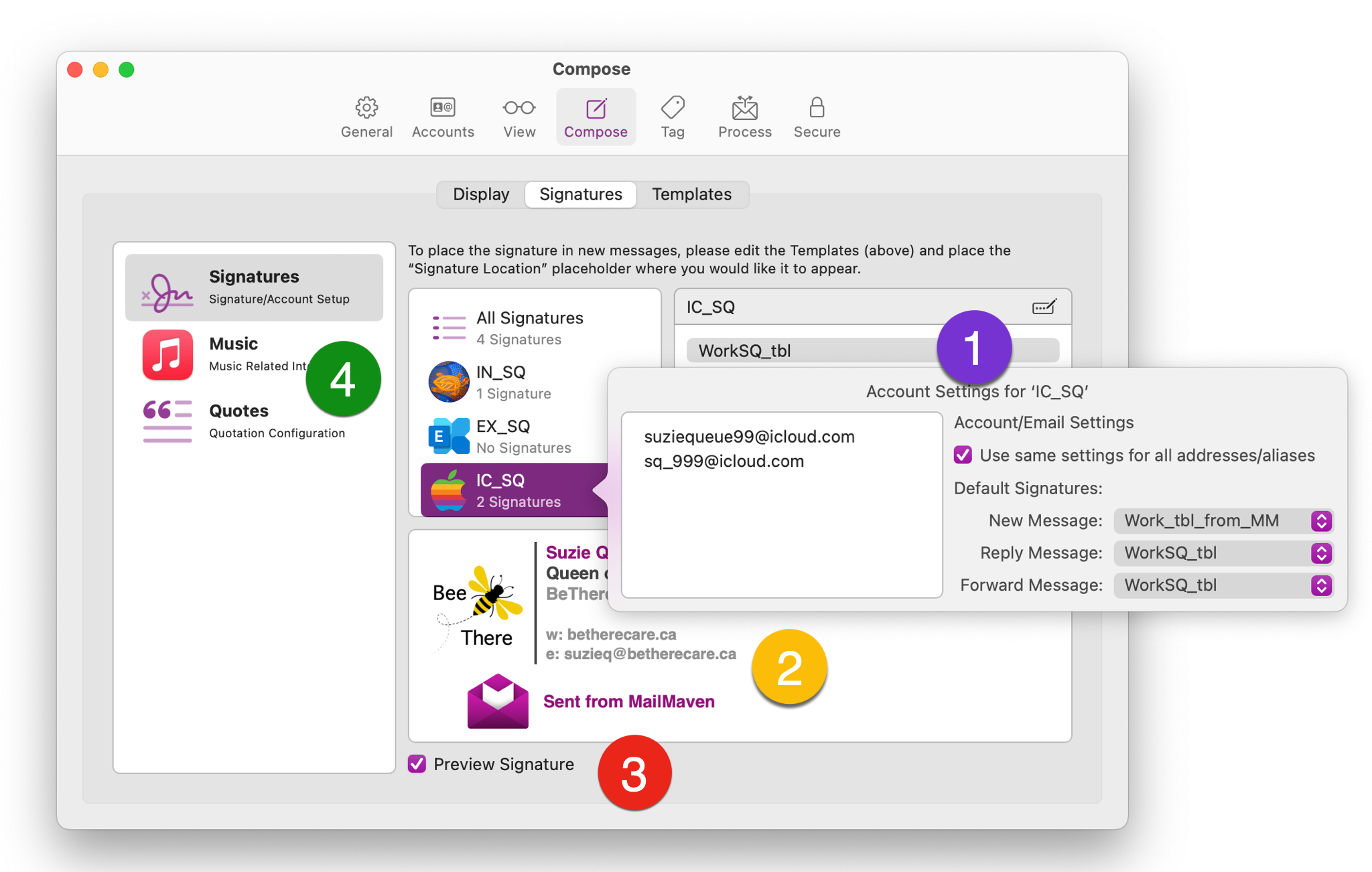
- The account settings such as "Default Signature" can be changed by clicking on the pencil with dots (
 )
) - Preview each signature in the signature view.
- Checking "Preview Signature" allows you to see the signature with live data when an account is selected.
- Customize signature items, including managing quotation and setting iTunes tokens.
Edit Signatures
To edit a signature, select the signature and double-click, or click the edit icon (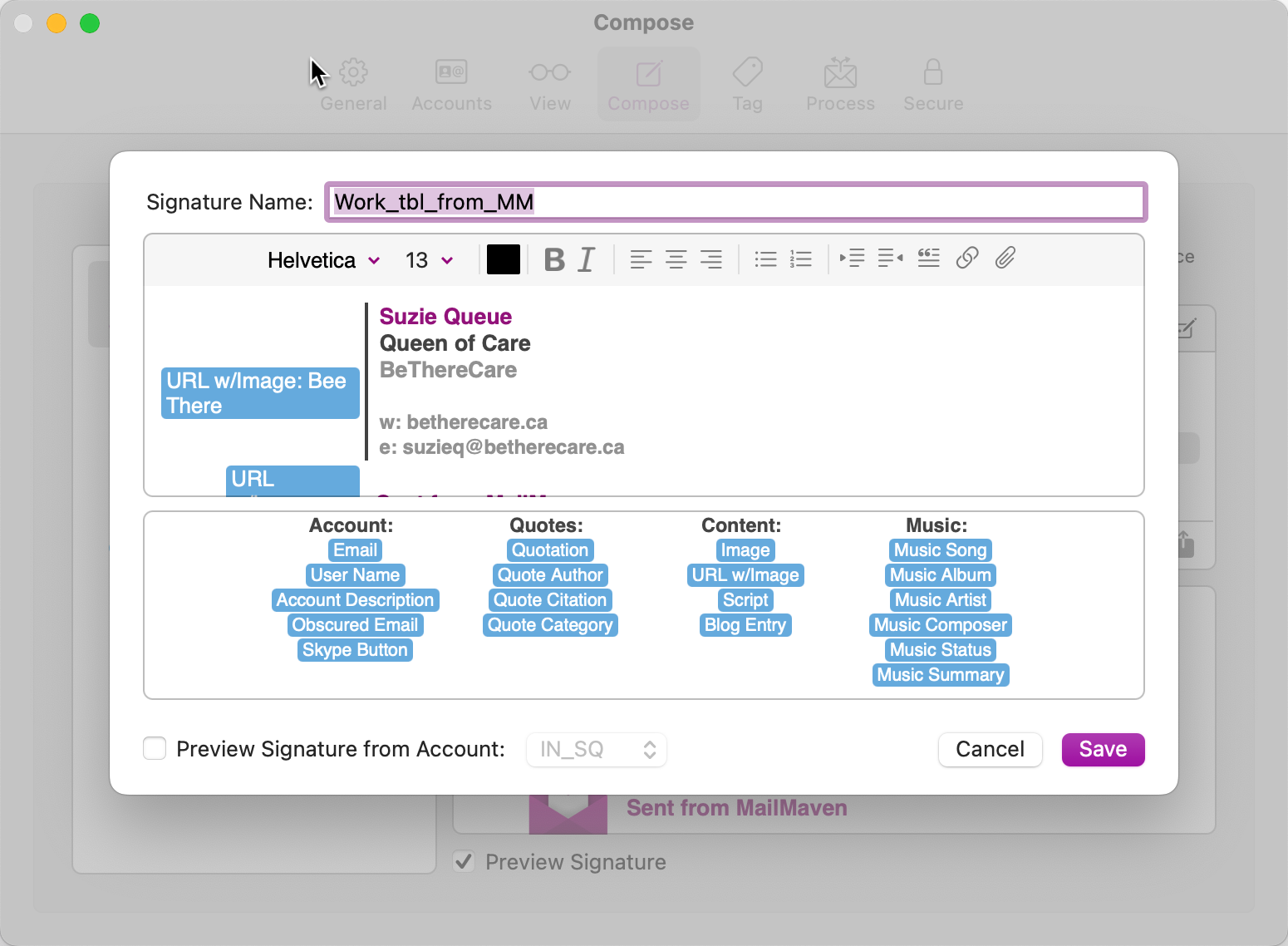
Simple Tokens:
User Name: The "Full Name" field in the Accounts definition or defined in the SigPro account settings for individual email addresses. Account Description: The "description" field in the Accounts definition Email: Email Address as defined in the currently selected mail account Obscured Email: The "Email Address" field in the Accounts definition translated into a format that most bots will not use to create spam lists, i.e. "sigpro dot support at smallcubed dot com" for "sigpro.support@smallcubed.com"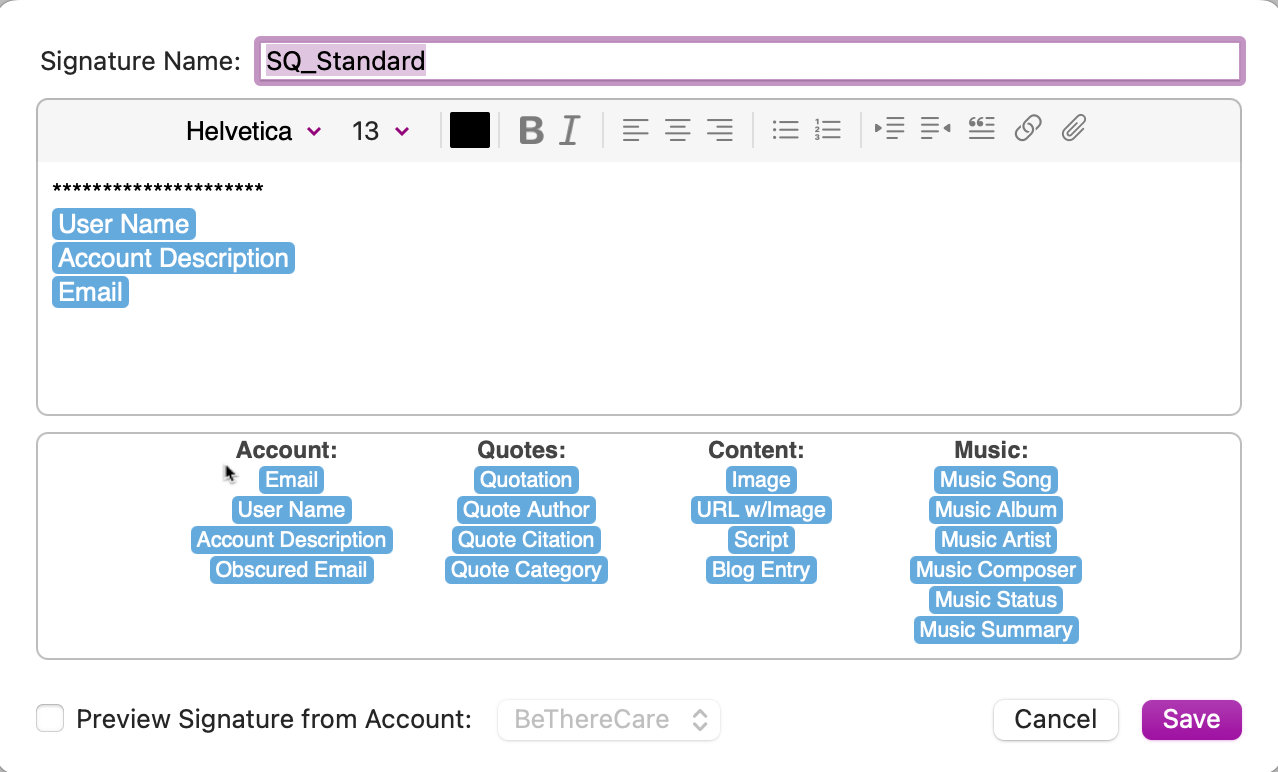
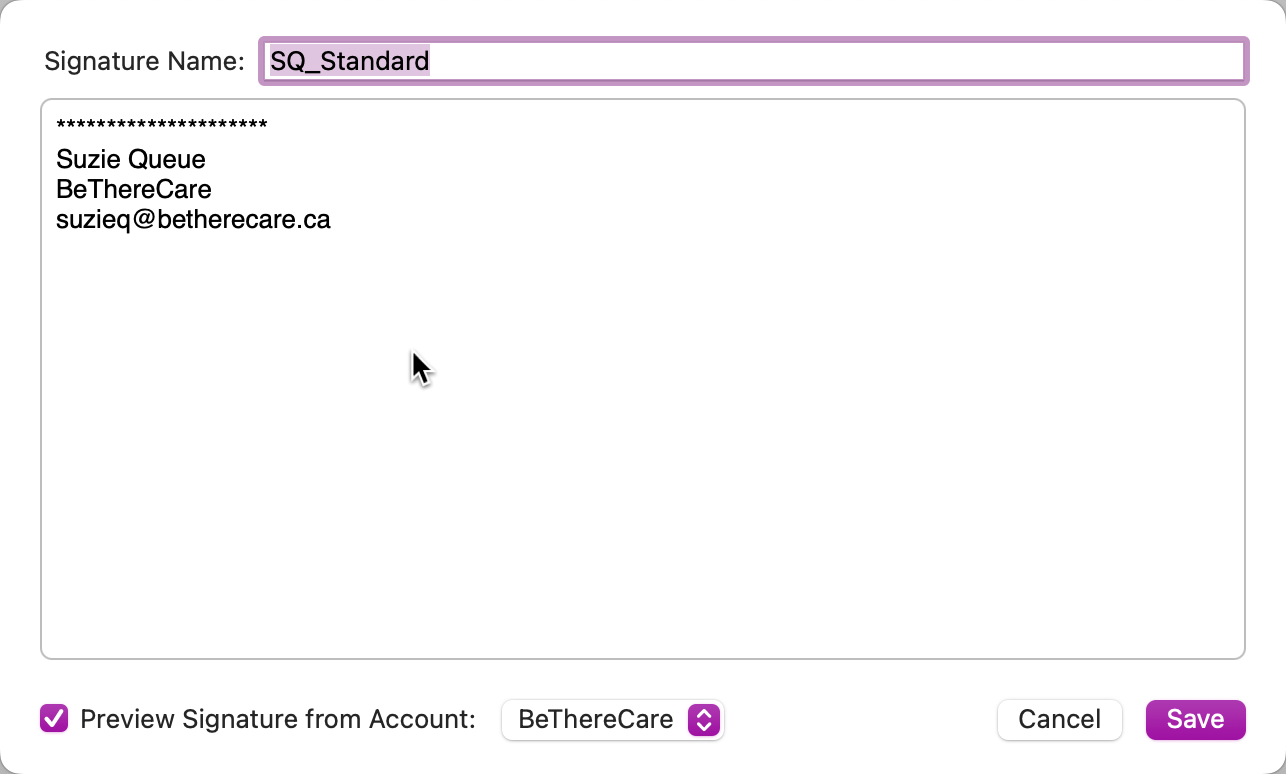
Content Tokens:
URL: Provide a URL and a description to add a link into your signature Image: Provide a URL to an image to include the image in your signature. You can enter a web based URL to the image or a base64 data URL. URL w/Image Provide a URL to an image, and a URL for a link to have a linked image in your signature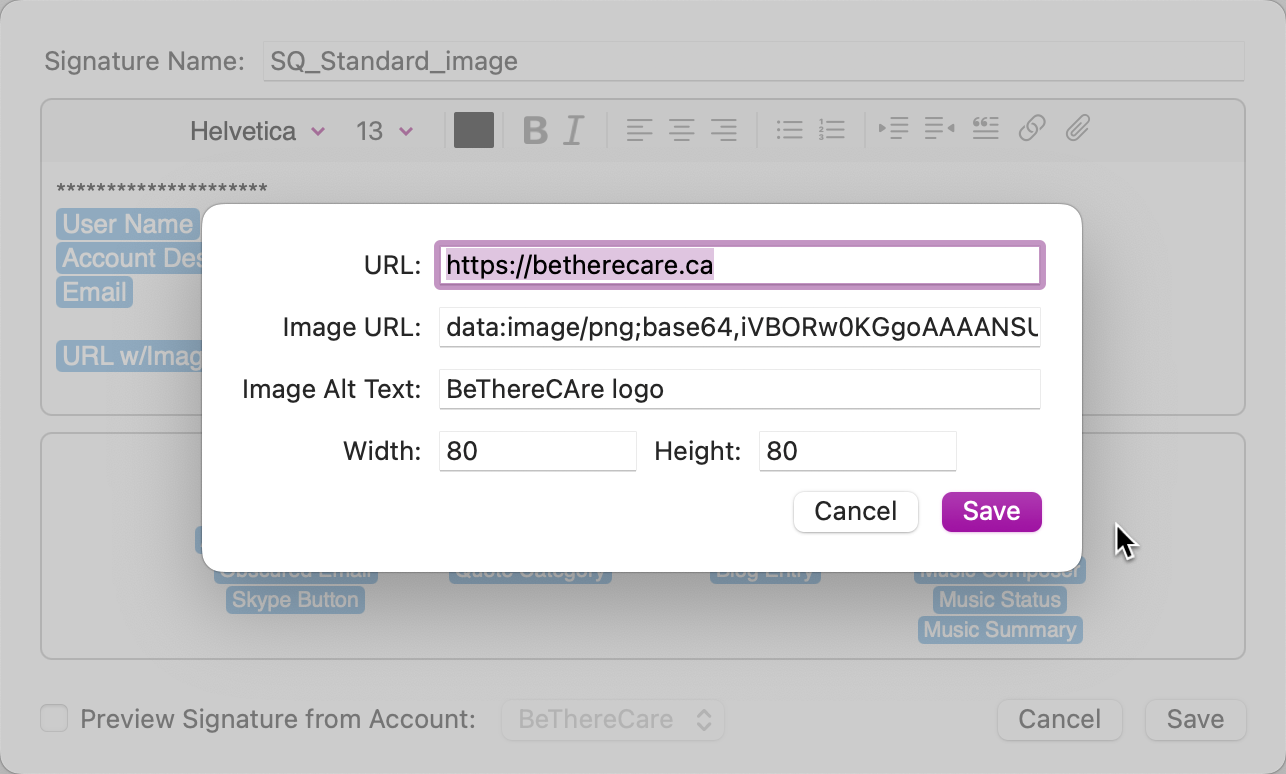
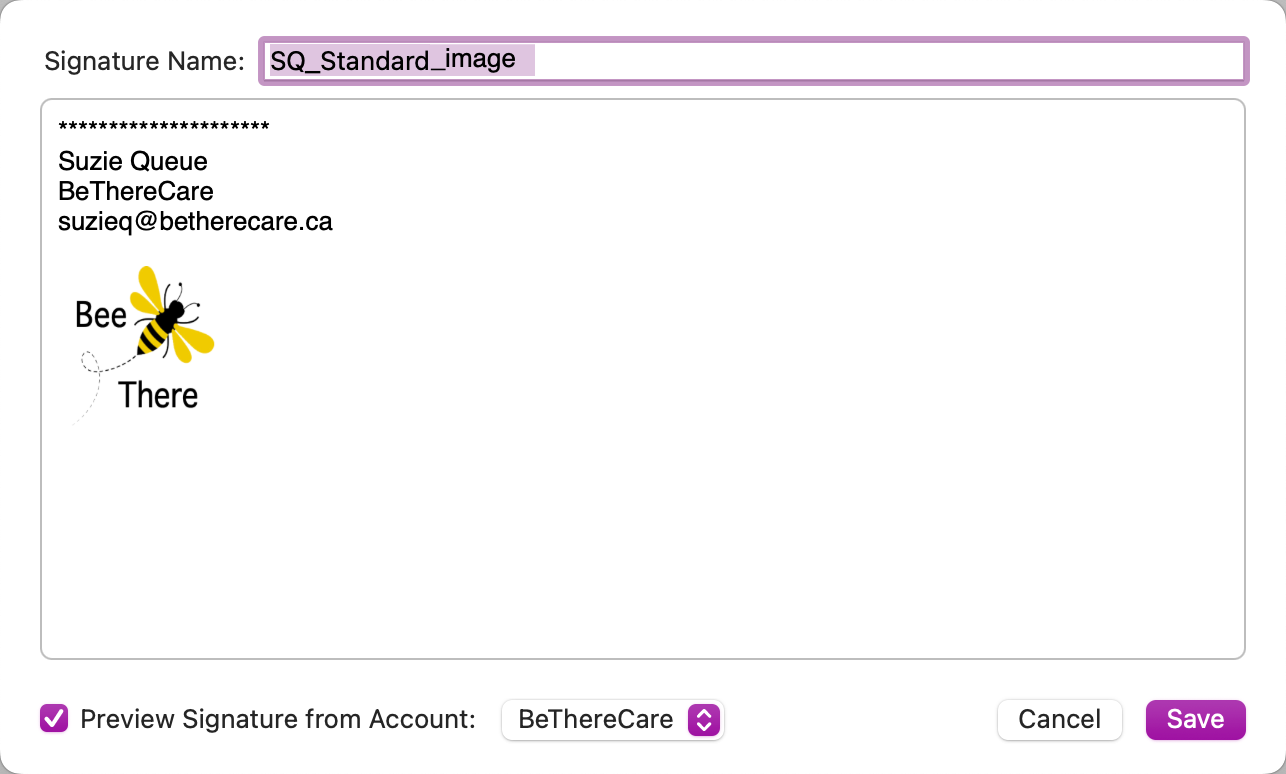
Blog Entry: Add the RSS feed for a blog to have the last post of that blog appear in your signatur
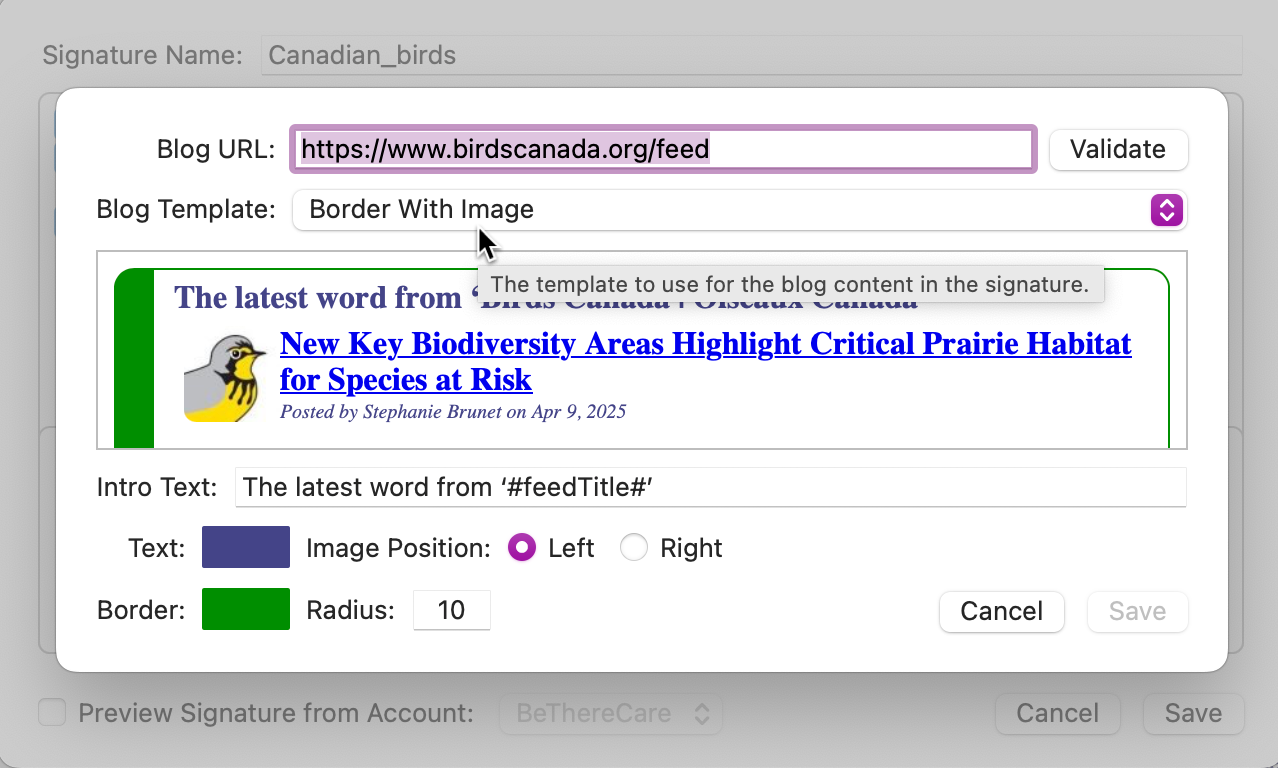
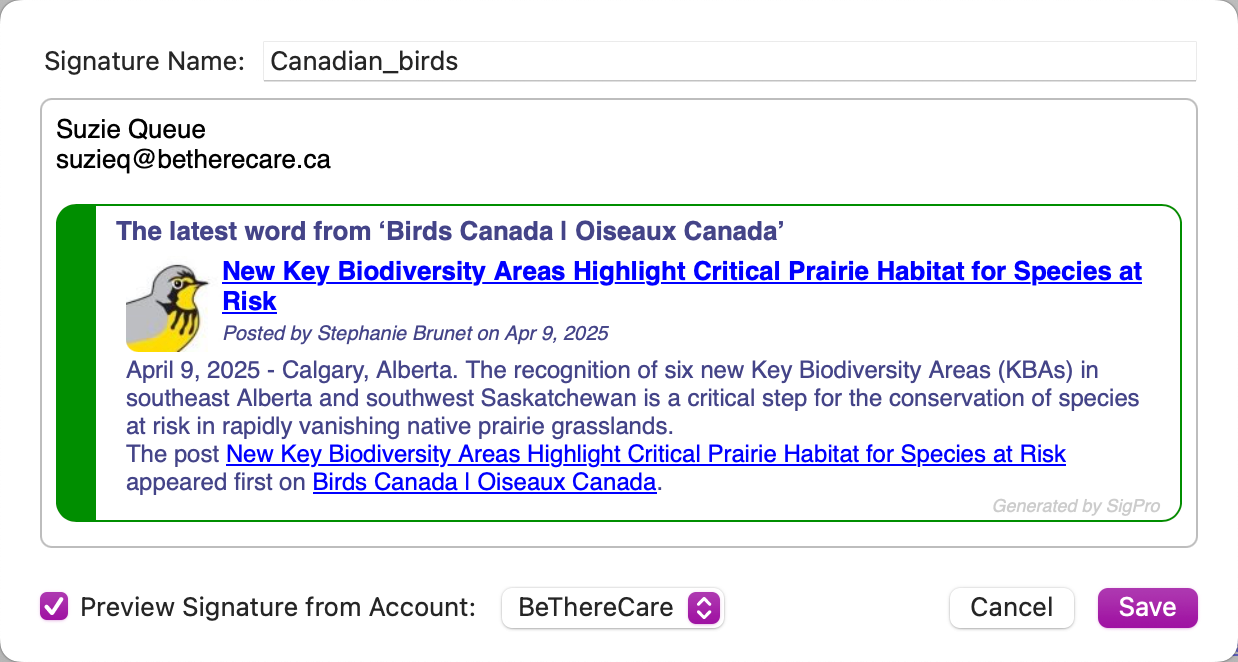
Script: Create a script to insert content into your signature.
Default Signatures and Aliases
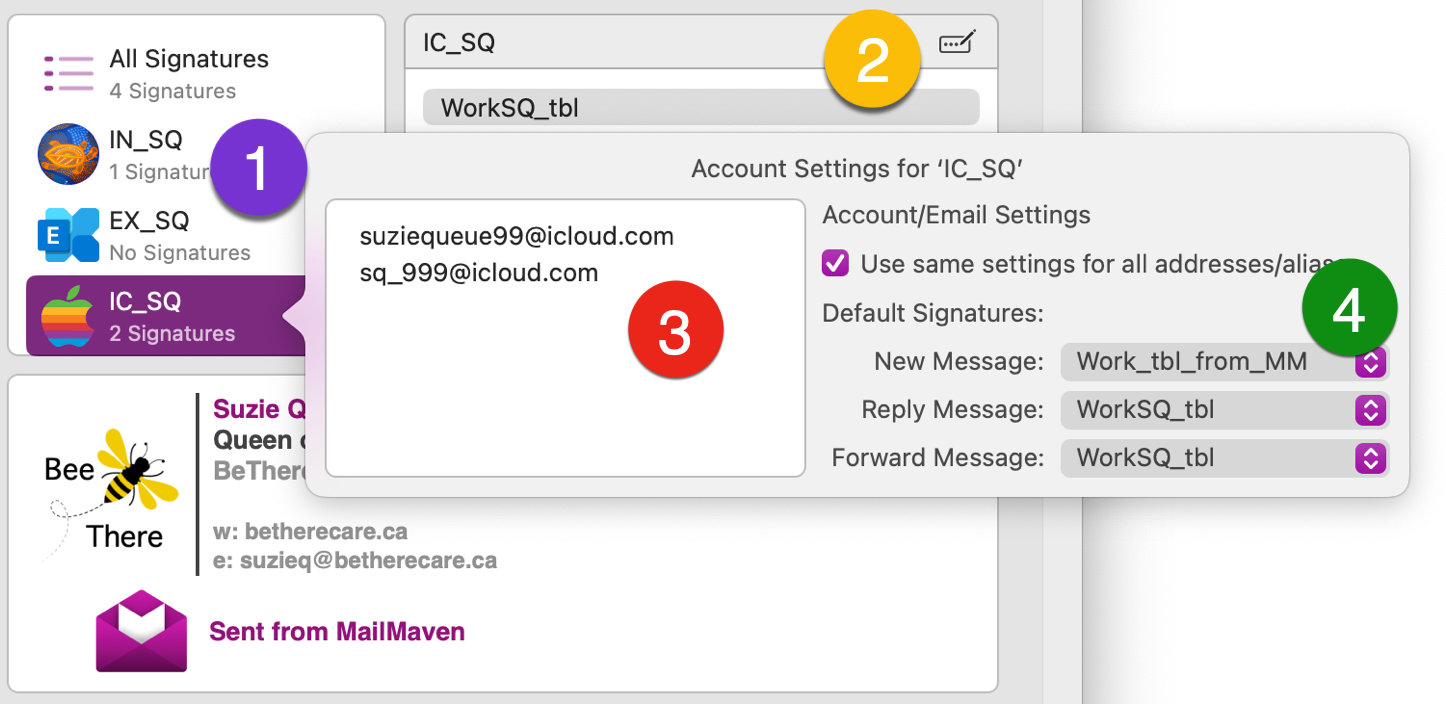
- Account list
- The account settings such as "Default Signature" can be changed by clicking on the pencil with dots (
 )
) - Email addresses for the account: both the default email address and any available aliases
- Set Default Signature for each email and for message types
Setting the Signature Location
In MailMaven, whether the signature appears above or below the quotes text in Replys as Forwards is set in the default message template, in Settings -> Compose -> Templates. Move the Signature Location token to where you want the signature to appear in the Template for Reply and the Template for Forwards.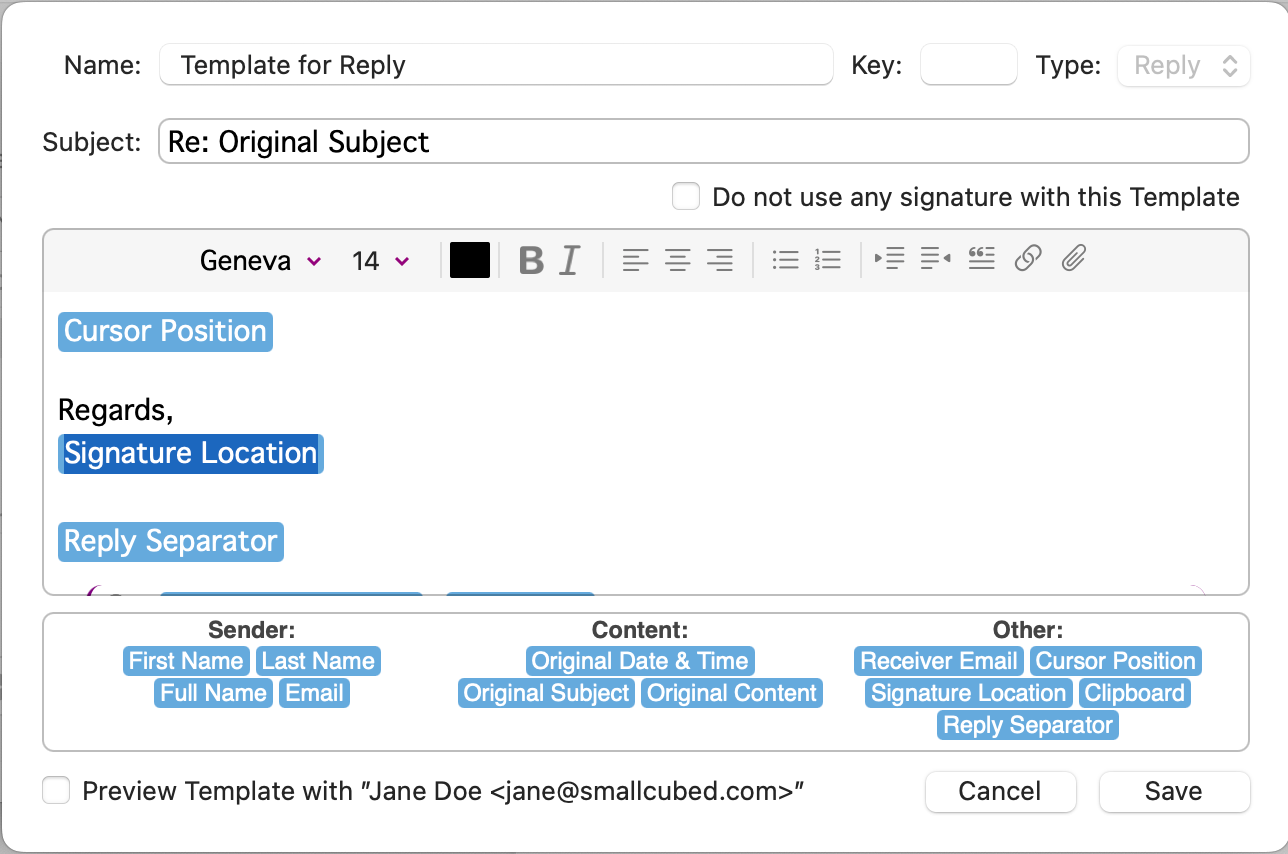
Random Quotations
The quotes tokens can be used to insert the "Quotation", "Quote Author", and the "Quote Citation" into a signature. Each token can be formatted separately as desired. The tokens will be filled in from the content of your "Random Quotes File".Quotes
Quotation: The quotationQuote Author: The author of the quotation
Quote Citation: Where the quote was taken from
Random Quotes File
In the Signature sidebar there is the “Quotes" section for selecting a "Random Quotes” file to import for use with your signatures.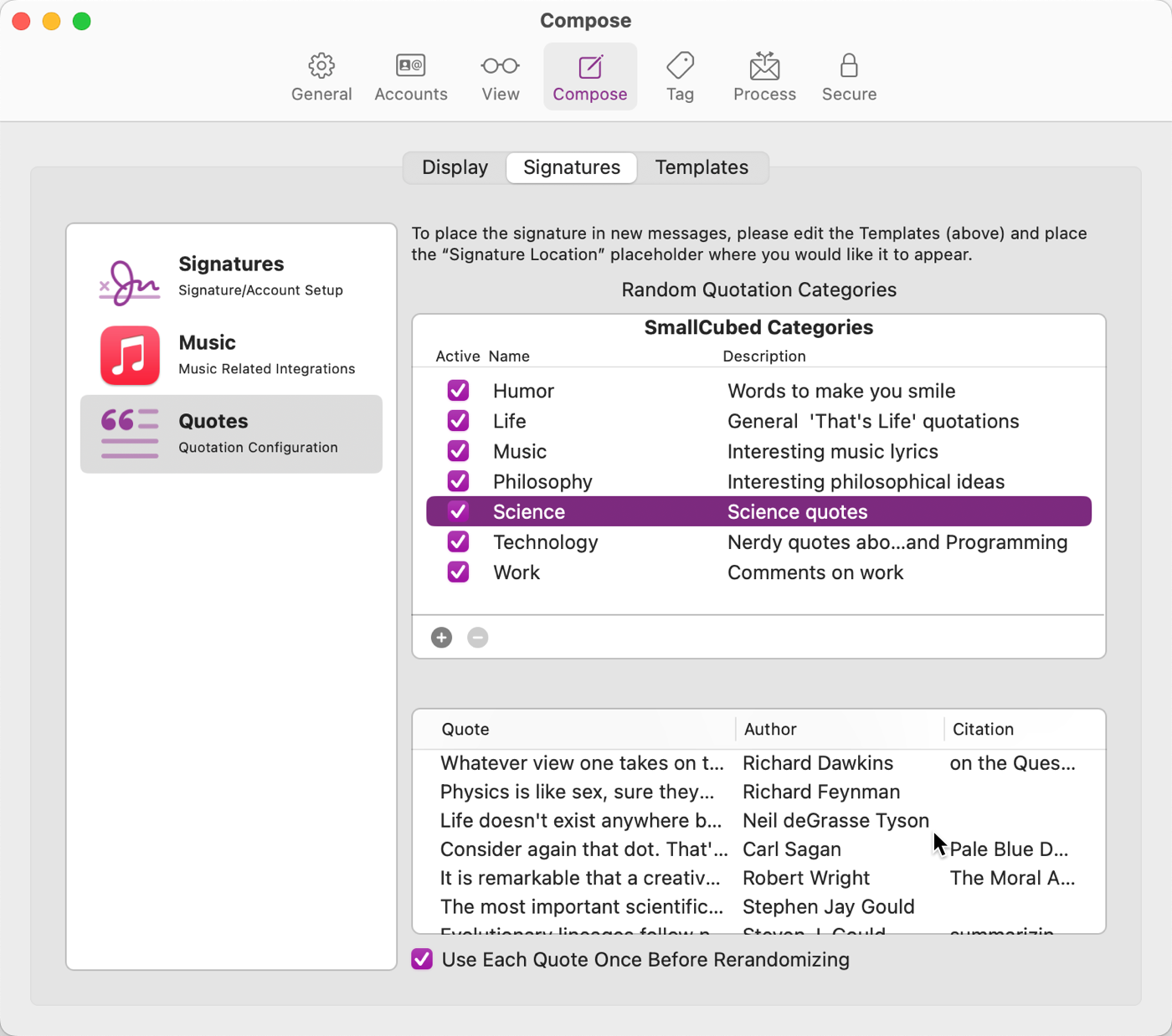
File Format
The "Ramdom Quote" files can now be created as a json files(filename.json) with the structure:
{
"name": "Category Name",
"description": "Category Description",
"quotes": [
{
"q": "The Quotation",
"a": "The Author",
"c": "A Citation"
}
]
}
{
"quotes": [
{
"q": "My first sig"
},
{
"q": "A second sig"
},
{
"q": "And here's a third one"
},
{
"q": "Even a fourthy"
}
]
}
Quotes within a Quote
Escaped double-quotes can be used in "q:", "a:" or "c:" entries to include the quote markes within the text. For example:
{
"quotes": [
{
"q": "This quotation uses escaped \"double\" quotes."
},
{
"q": "There are \"10\" types of people in the world: Those that undersatand
binary and those that don't."
}
]
}
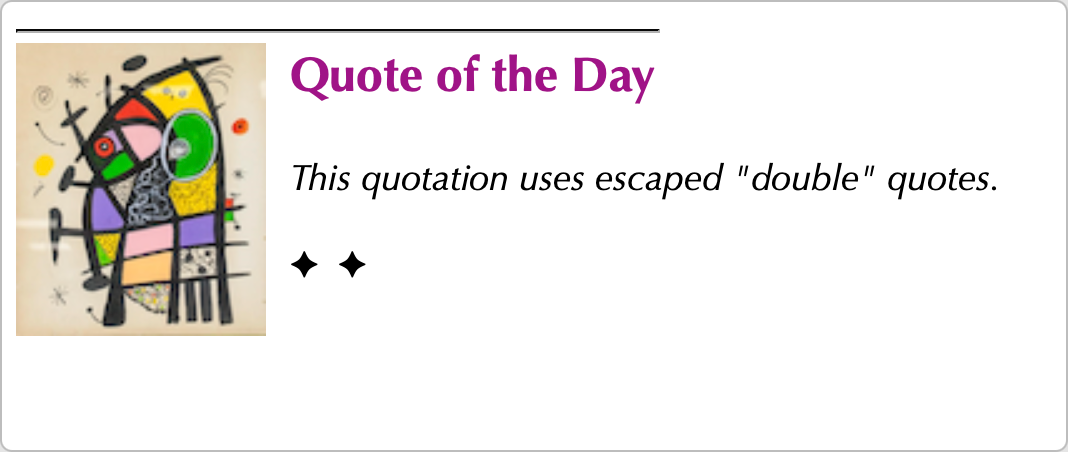

Basic HTML
In the quotations section, basic HTML format can be used:<strong></strong> to bold
<em></em> to italizie
<u></u> to underline
<br/> to add a line-breaks
or more complicated inline styling in HTML such as <span style='color:#812bb8'></span>
Note that you should only use 'single quotes' in the span style. Sample with HTML formatting
{
"name": "Quotes with HTML",
"quotes": [
{
"q": "This is in <em>italics</em>. While I am <strong>bold</strong>.
<u>Underline Me</u>.<br/>Put me on a new line.: <br/>Make some of these
words <span style='color:#812bb8; font-weight:bold; font-size:2em;'>large
and purple</span>",
"a": "Typist",
"c": "Typing Practice"
}
]
}
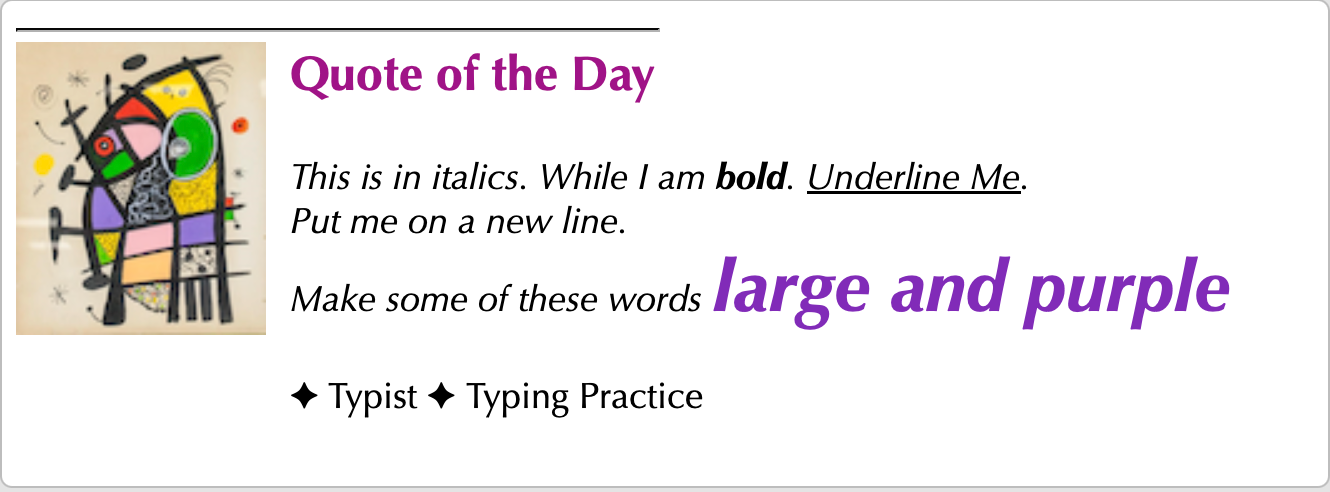
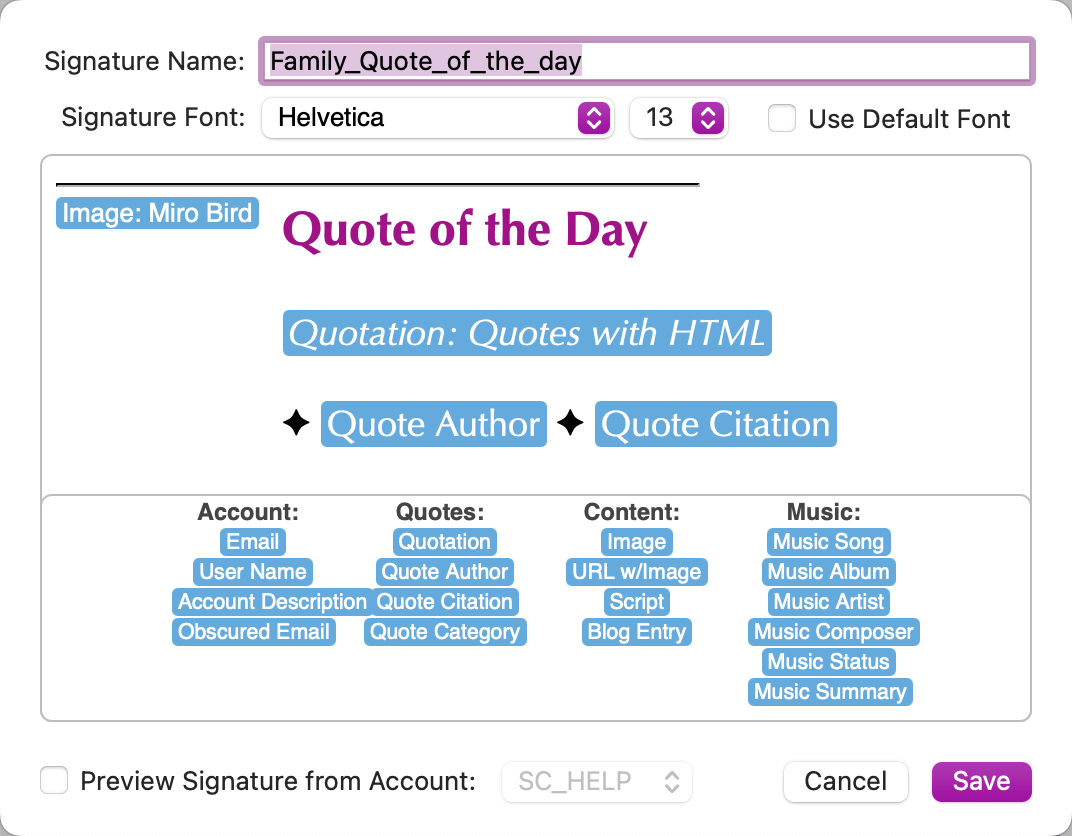
iTunes Integration
The "iTunes" settings can be used to let people know what you are listening to in Apple Music. ### **iTunes Tokens:** iTunes Song: The currently playing song Music. iTunes Album: The album of the currently playing song iTunes Artist: The artist of the currently playing song iTunes Status: The current status of Apple Music (see below) iTunes Summary: The summary as set in the iTunes window The iTunes tokens iTunes Song, iTunes Album, iTunes Artist and iTunes Status can be dragged into any signatures. However, they will only have information if Music is playing. Another way to display Music infromation is to use the iTunes Summary in your signature. The iTunes Summary will display the content of the status signatures as setup in the iTunes signature window. You can have a different signature display depending on whether Music is: playing, paused, open but not playing, or not open.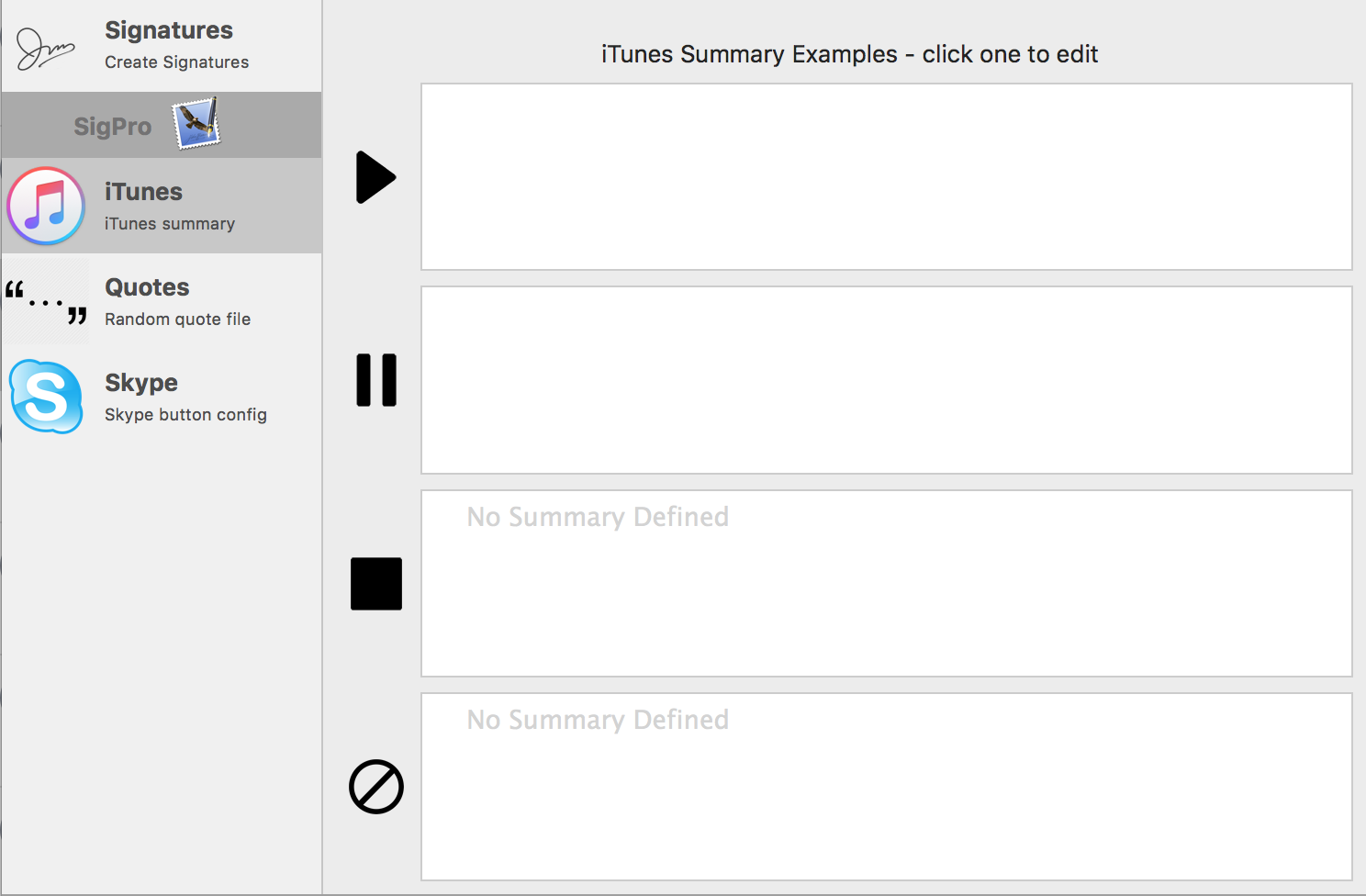
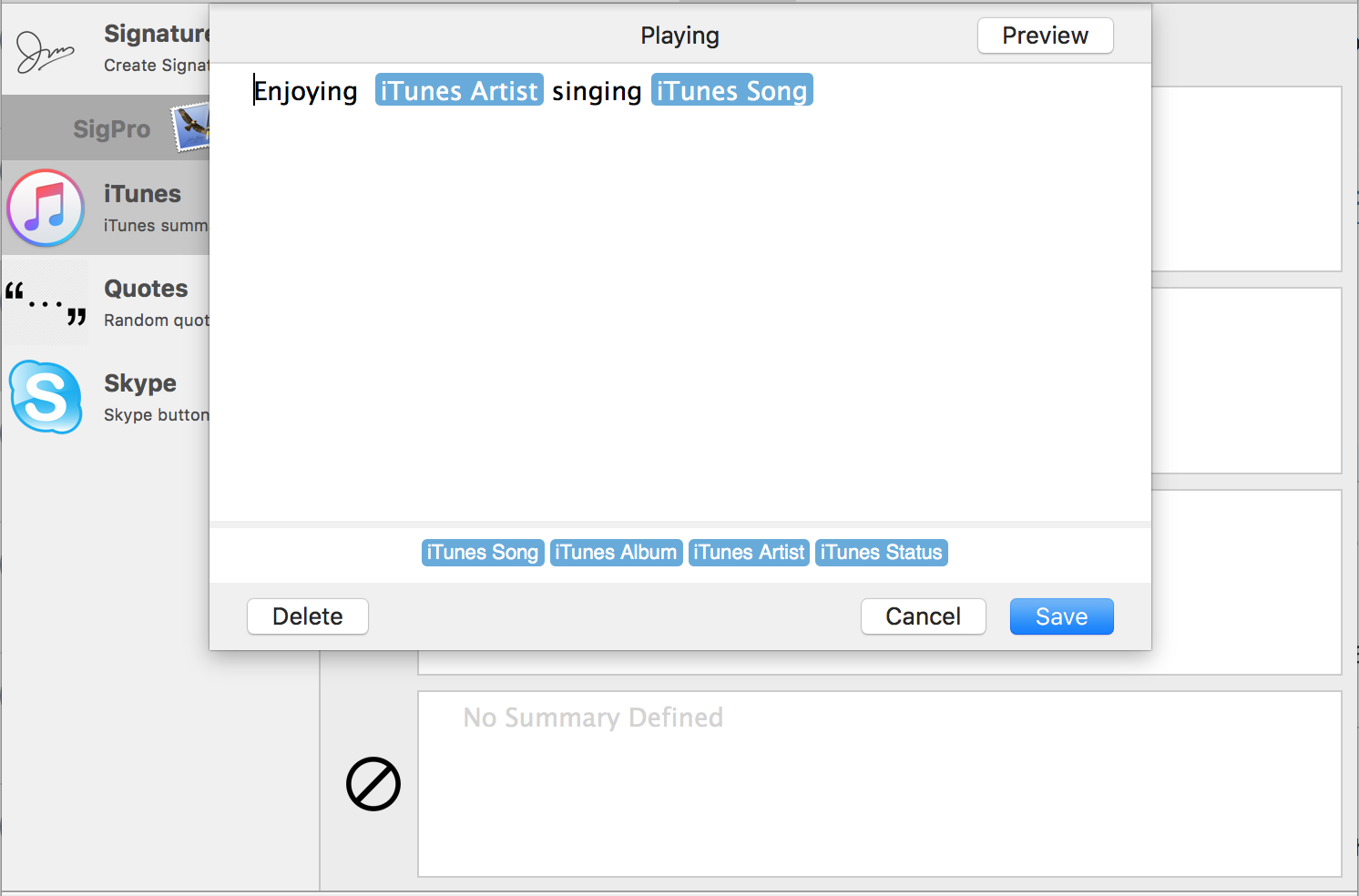




Using Scripts
The script token allows scripts to be used to pull content into a signature. This is an advanced feature for users who are comfortable with script writing. When the script token is dragged into a signature it provides a Finder window to select the scripts. A second window then appears to provide arguments and set whether to use <pre> tags.